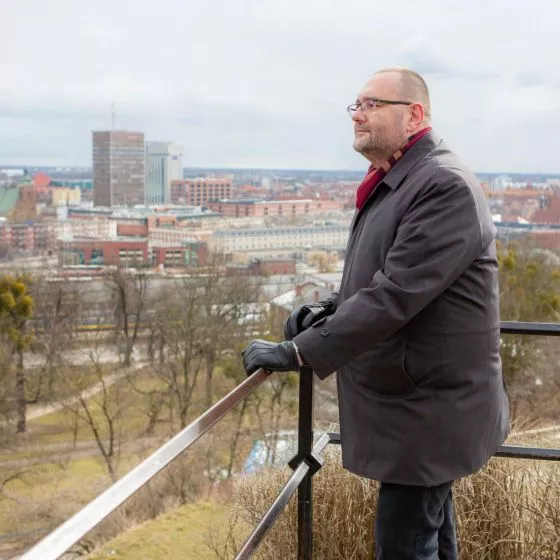The first decades of the 21st century were a period when small estates or single blocks of flat s were being built in Poland . Developers were just getting started, accumulating capital by completing smaller projects to soon enter the market of much larger residential complexes. Today, they are increasingly implementing large developments of entire neighborhoods, boasting the availability of services and common spaces. One such development is Warsaw's Wilno Estate. Is the younger version of Miasteczko Wilanów really a good place to live?
fenced in reverse
photo by Kacper Kępiński
The retreat from fenced estates, or the rise in buyers' expectations, has led to a visible change also in the type of investments realized. Developers have begun to develop mixed-function estates, often advertised as small ("intimate") neighborhoods or "towns," where the residential function is supplemented by local services, private educational institutions and chain clinics. Still little space is left for common spaces. Despite the lack of visible fences or their significantly smaller number, one will almost never find a public park, a local government kindergarten or a nursery in such neighborhoods.
Vilnius in Targówek
photo by Kacper Kepinski
One of the most spectacular examples of a large development being built by a single developer is Warsaw's Wilno Estate. Located on the outskirts of Targówek, the Dom Development development has its own train station and central plaza. The urban planning, quarters and road layout were designed based on the current Local Development Plan. However, planners gave the developer almost a free hand in shaping the development. No roads or public spaces have been designated, only the basic indicators - height, intensity or biologically active area - have been established.
Far away, but with good access
Photo: Kacper Kępiński
The project, which was divided into many stages, included a railroad station on a well-connected Rapid Urban Rail route, a system of streets and squares, as well as the residential buildings themselves. Divided into smaller quarters, the development blocks consist of low, approximately 4-story buildings. Fences are routed in such a way as to prevent outsiders from accessing the inner courtyards. The first floors of some of the blocks have been designated commercial premises. The buildings are located close to each other, and in some places there is a feeling of tightness.
branding carved in stone
photo by Kacper Kępiński
Public spaces are finished in a fairly standard manner, although a few places have been given a "premium" setting. This includes the plaza at the entrance to the estate - with a debatably beautiful fountain. Vilnius motifs also appear in the estate's space. Reliefs in sandstone on the facades of buildings and free-standing pylons , however, can hardly be called art in urban space. Rather, they are branding elements of the development introduced into its physical space. Here, too, the artistic level could be higher. The aesthetics of the estate, apart from these insertions, are very simple. White blocks of blocks dominate, with darker woodwork, anthracite and woodgrain inserts - which is now a developer standard reproduced on a mass scale . What is positive is the sheer visual order that this consistency builds. The space is quite generic and bland, but it is not glaring and can provide a harmonious backdrop for everyday life.
number of residents: several thousand, number of schools: zero
photo by Kacper Kepinski
The estate designed by HRA Architects is planned to house several thousand people. Marketing descriptions and press statements by both the developer and architects, however, focus on common spaces or the individualization of similar blocks with murals. One looks in vain for information about schools or kindergartens. Thus, Elsnerów, where the Wilno Estate is located - does not have a single elementary school. The percentage increase in the number of children here between 2010 and 2017 was 1592%. This is the largest percentage increase in Warsaw, undoubtedly caused by, among other things, the construction of the Wilno Estate. Numerically, this means the appearance of 350 children under the age of 4. The data relates only to registered persons, so it can be assumed that they are significantly underestimated. In 2018, the estate had 1,622 registered residents, although the developer's estimate is that the Vilnius Estate already has 5,000 residents.
Photo by Kacper Kepinski













































